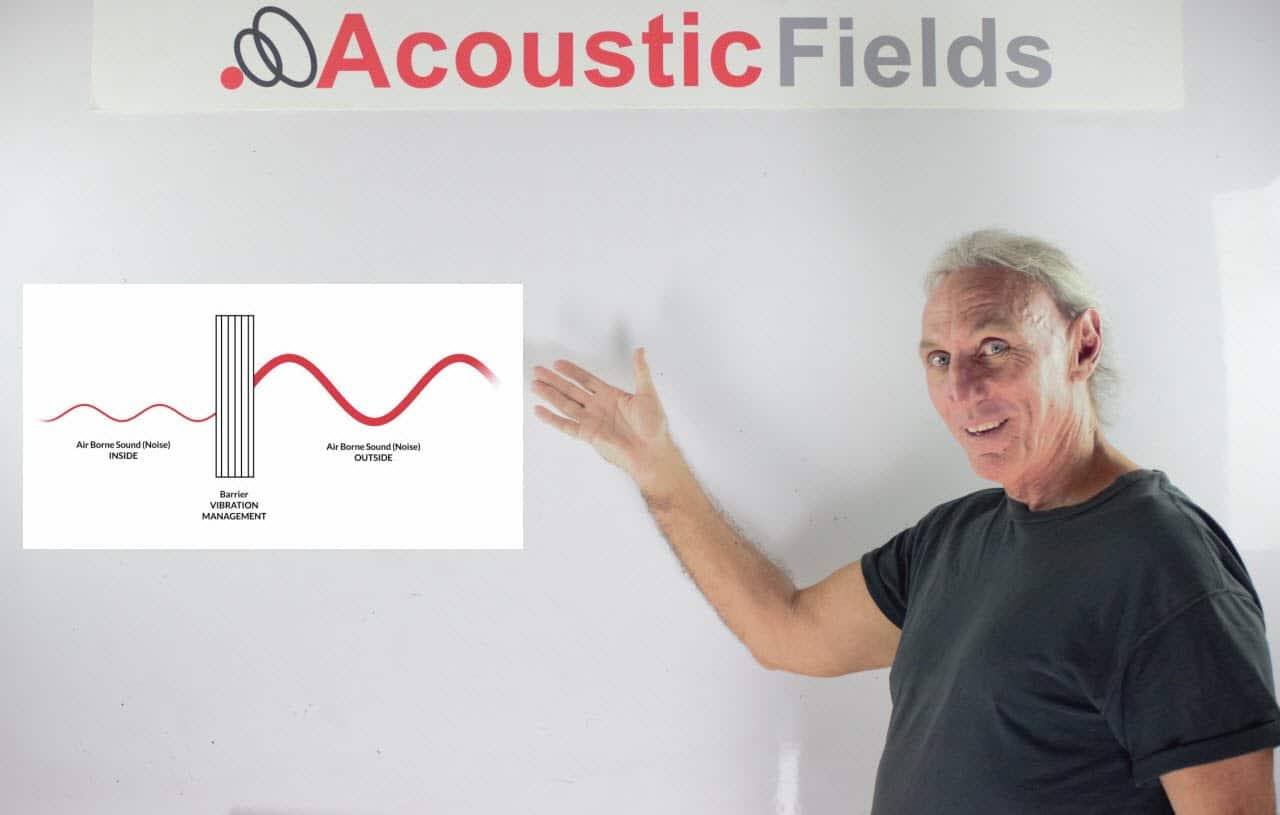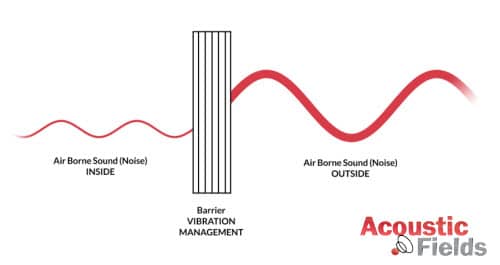Today we’re going to talk about sound transmission class rating. Our rooms technically should be two rooms. There should be a room within a room. The room in which we are in is the room where we do all our work, play all our music, do our recording. The room that’s around that is our shell and this is a structure that is all about isolation. We want to keep all the energy that’s in the room, in the room and we want all the energy being produced outside the room from coming into our room.
So the shells chief objective is isolation. Now I know a lot of you can’t have a separate structure for isolation and a separate structure for sound absorption and sound diffusion technology and doing whatever you’re doing musically within the room. So we try to get the room to do both functions. We try to get it to isolate and we also try to get it to diffuse and absorb and I think here’s where the confusion lies.
So what are sound transmission class ratings?
Its a rating of the materials in the shell for isolation but not concerned with absorption and diffusion that goes on inside and I think here’s where the confusion lies. So the shell, if we have our room and then we have a room within a room, our shell has to have a flexibility and rigidity ratio to the room inside of it.
So there has to be a certain balance between the materials we use in our shell and the materials we use in our room. And that balance between those materials is critical to the sound quality that goes on inside our room.
A lot of barriers are made of concrete so that’s very rigid and very dense. A lot of the rooms are framed with wood which is a positive thing for sound quality.
Flexibility/rigidity ratio
So the flexibility/rigidity ratio between the structure of the room we’re working in and our shell has to be taken into consideration. But our shell is where the sound transmission class rating comes into play. Its a rating of how much energy the shell can keep from entering the room. Has really nothing to do with the absorption and diffusion that goes on within the room.
So I get a lot of questions about sound transmission class rating as it relates to absorption and diffusion in the room and they’re completely separate concepts.
Just to give you an idea of how barrier technology works, a sound transmission class rating on a structure of 50 is better than 40. Now that said that 10 incremental difference is very expensive because to isolate sound energy from coming into the room is expensive you have to use a lot of mass and mass is expensive. So you want to match the rating of the shell to the noise levels of the noise levels that you have outside the room.
So if you’re in a busy environment with a lot of traffic and car noise, the STC rating of the shell will need to be much higher because you have more energy that you have to keep out of the room. So the thing about barrier technology vs treatment is they really address separate issues and people often get those confused.
Two Categories Of Barriers
Barriers are also broken down into two categories, those below 125 cycles and those above 125 cycles. So if the noise outside your room is below 125 cycles, you’re going to need a certain barrier technology to keep that energy out. If its above 125 cycles you’re going to need less mass but you’re still going to need a technology that will keep those frequencies out.
So quantifying our noise levels, deciding how much barrier technology we have to use and then applying the right amount of diffusion and absorption material inside the room will be helpful.
In the below graphic you can see air borne energy striking the barrier and then obviously we want to isolate that, we don’t want it getting in our room. So we have air borne energy striking a structure which then turns into vibrational energy and the goal of the barrier will be to stop those vibrations from becoming sound energy within our room.
In Summary








